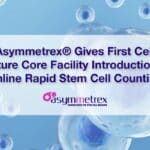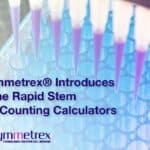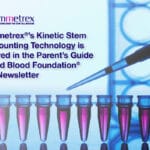Asymmetrex continues to court gene-editing companies; Editas Medicine, Intellia Therapeutics, and CRISPR Therapeutics to name a few. Asymmetrex wants to dance with these companies into the new era of gene-editing therapeutics. Asymmetrex started pursuing them late in 2015. Today, the company announced that it would begin courting the companies’ scientists at conferences focused on gene-editing research and progress to clinical trials. Asymmetrex holds keys to two locks that currently bar the door to efficient and efficacious gene-editing. In order for gene-editing therapy to work, the DNA-editing must be performed in rare and hard to quantify tissue stem cells. Asymmetrex’s patented SACK technology can increase the number of targeted tissue stem cells, making their editing more efficient. Asymmetrex’s AlphaSTEM technology will allow gene editors to determine whether sufficient tissue stem cells are present for effective editing and whether sufficient tissue stem cells have been edited for stable, efficacious therapy. Although it is a Sadie Hawkins Day affair at the moment, Asymmetrex is looking forward to these companies wanting to sign its dance card soon.
Asymmetrex Continues Efforts to Raise Awareness of the Importance of Tissue Stem Cell Counting for Advancing Gene-Editing Therapeutics
At a conference on May 4-5, Boston stem cell medicine technology start-up Asymmetrex will target gene-editing scientists directly for relating the importance of incorporating the company’s stem cell counting technology into their work to develop new genetic therapies. The company will also discuss its technologies for expanding natural adult tissue stem cells, which are a rate-limiting factor for successful gene-editing therapeutics.
BOSTON, MA (PRWEB) APRIL 28, 2016
Next week on May 5 at 2:55 pm (EDT), Asymmetrex will deliver a talk on its first-in-class technologies for tissue stem cell counting and expansion to gene-editing scientists and other attendees at the 2016 Meeting on RNAiMicroRNA Biology to Reprogramming & CRISPR-based Genome Engineering in Burlington, Massachusetts.
The attention of most gene-editing scientists appears to be focused primarily on well-considered challenges in the DNA-editing technology itself. These are now widely appreciated. They include the usual metrics of the quality of engineered processes: efficiency, sensitivity, specificity, accuracy, precision, and reliability. They also include the all-worrisome unknown unknowns of human biology that may not show up until later in treated patients. However, technological improvements continuously reduce the concern about known challenges, with the expectation that very soon the FDA will accept the first gene-editing clinical trials.
Asymmetrex has its attention on a challenge to gene-editing therapy that becomes important once DNA-editing technology itself is ready for application. This additional challenge is related to the special role of adult tissue stem cells in gene-editing therapy.
Tissue stem cells are the only cells in the body that are long-lived in tissues and organs – on the timescale of the human lifespan – and maintain an open DNA blueprint for cell multiplications that replenish mature functional organ and tissue cells without loss of stem cells. In contrast, mature tissue cells function for only a short period of time – on the order of days to weeks – before they die. Upon dying, they are either sloughed off or reabsorbed followed by disintegration and recycling of their components. So, for effective gene-editing therapy, the editing must take place in the DNA blueprint of tissue stem cells.
All the challenges that stem cells present to stem cell medicine rear-up their problematic heads in gene-editing therapeutics, too. These are scarcity, impurity, difficulty identifying, difficulty counting, and difficulty producing in larger number. Gene-editing companies have tried to get around these problems by engineering molecular vectors that are very efficient at getting into cells and performing gene-editing. But even these strategies would improve significantly with larger numbers of stem cells for editing and knowing the number of stem cells edited.
The ability to expand tissue stem cells and count them, for the first time, is what Asymmetrex can bring to the gene-editing effort. James Sherley, founder and director of Asymmetrex, will give the presentation on May 5. Sherley has contacted some chief executives of gene-editing companies, but he says, “This is a bunch of very focused CEOs! But the first ones to give attention to our technologies for expanding and counting tissue stem cells are going to gain quite an advantage.”
Asymmetrex’s SACK technology employs natural cellular metabolites to induce adult tissue stem cells to multiply exponentially. Its more recently developed AlphaSTEM technology for counting adult tissue stem cells was pioneered with partner AlphaSTAR Corporation. In addition to gene-editing therapeutics, these technologies have many other potential applications in stem cell medicine and drug development. Examples include counting the number of hematopoietic stem cells in umbilical cord blood transplants used for treatment of childhood leukemia and early detection of drug candidates that would later cause organ failure due to tissue stem cell toxicity.
About Asymmetrex
Asymmetrex, LLC is a Massachusetts life sciences company with a focus on developing technologies to advance stem cell medicine. Asymmetrex’s founder and director, James L. Sherley, M.D., Ph.D. is an internationally recognized expert on the unique properties of adult tissue stem cells. The company’s patent portfolio contains biotechnologies that solve the two main technical problems – production and quantification – that have stood in the way of successful commercialization of human adult tissue stem cells for regenerative medicine and drug development. In addition, the portfolio includes novel technologies for isolating cancer stem cells and producing induced pluripotent stem cells for disease research purposes. Currently, Asymmetrex’s focus is employing its technological advantages to develop facile methods for monitoring adult stem cell number and function in clinically important human tissues.







Leave a Reply